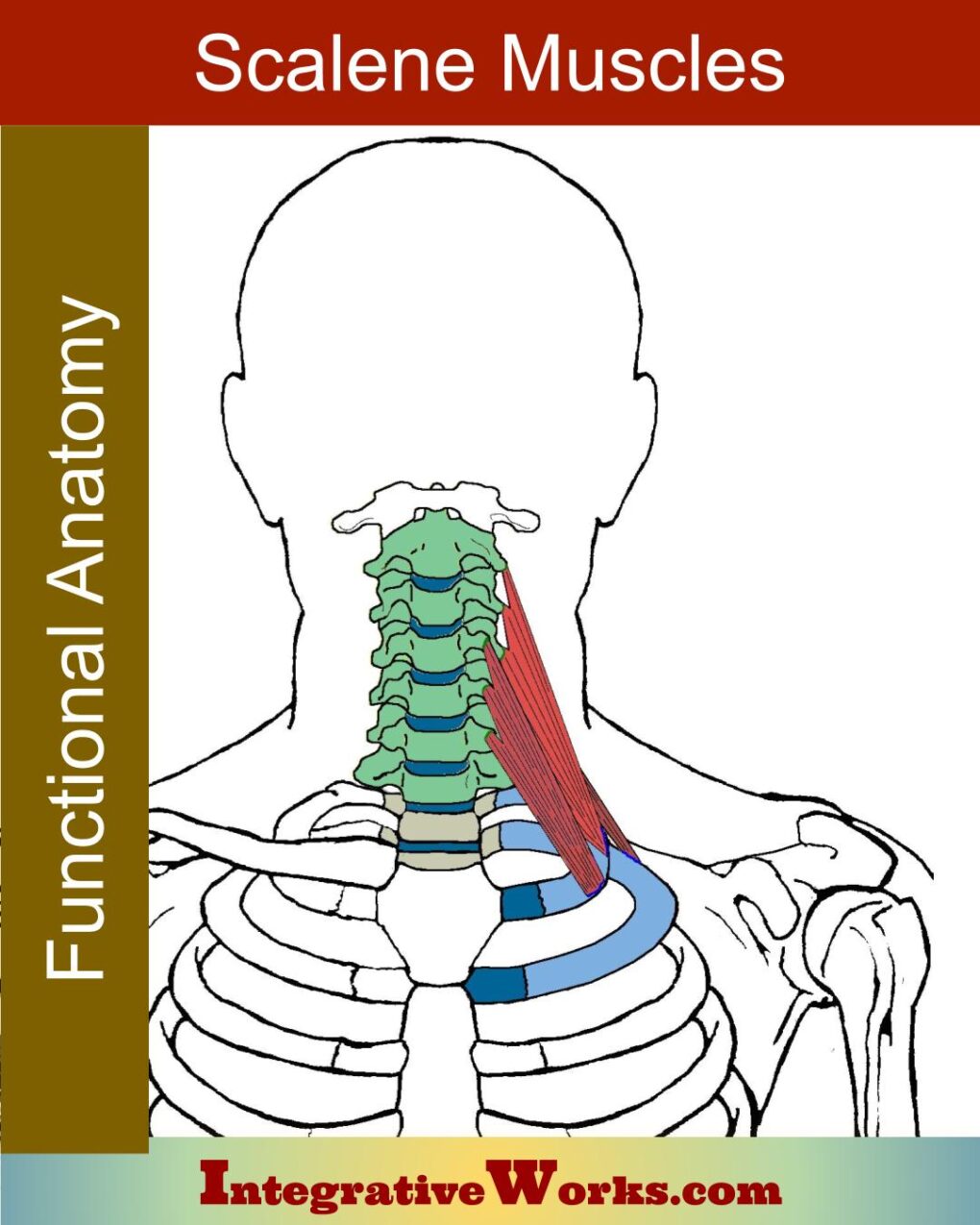Stretching for scalene muscles
Here are some specific stretches for scalene muscles that have been recommended by many sources over the years. They were published in the self-care section on scalenes in the research of Janet Travell, the physician to two presidents. Clinical experience has proven them to be effective for helping the problematic effects of tight scalene muscles.
Helpful Material to Review
Musculoskeletal Anatomy
This post on anatomy contains standard information about the origin, insertion, function, and innervation of muscles. Additionally, it includes information on functional considerations and anomalies.
Find Related Posts
Anatomy posts have a grid of all related posts. This includes posts on pain patterns, self-care, therapy notes, NMT protocols, cranial techniques, and cases.
Better with Ice and Active Stretching
This stretch protocol works even better when you use AIS guidelines in combination with icing. This is not the traditional icing that takes 15-20 minutes. Instead, a brief stroke of ice on the surface releases the muscle. After, Active Isolated Stretching uses gentle repetitions to relieve the muscle more quickly. This works with the nervous system to retrain the muscle.
This post shows you how to use ice to stretch with less pain and more effective results in less time.
The Scalene Muscle Stretches
Posterior Scalene Stretch
If you have Forward-Head Posture, you may choose to skip this step’s stretching portion and continue on the second step. If you skip ahead, make sure that you ice the back of your neck before stretching in the third step.
First, stroke the back of your neck with ice where I have indicated in blue. Make sure that you ice around the base of the neck.
Turn your face away from that side and stretch by moving your head toward the opposite shoulder.
This stretch feels less effective to people who have Forward Head Posture as the posterior neck muscles are already overstretched.
Tip: You should play with slight variations in positioning your head. Try to target the back of your neck and top of your ribs. If you get sensation into your back, chest, or arm, that’s good. It means that you’re targeting the trigger point and feeling its referral.
Middle Scalene Stretch
Second, stroke the side of the neck with ice where I have indicated in blue. Make sure that you cover the side of the neck from just under your ear to the base of your neck near your shoulder.
Turn your nose toward the ceiling and stretch by moving your head toward the opposite shoulder.
Tip: With the idle hand, reach down toward your foot so that the shoulder is pulled down, away from your head. Slide that hand under your hip to stabilize the shoulder. This position will make a notable difference in your ability to stretch the side of the neck.
Anterior Scalene Stretch
If you skipped stretching in the first step because of Forward-Head posture, make sure that you have iced the back of your neck before this step. Although this exercise targets the anterior scalene muscle, the posterior scalene often restricts the stretch.
Third, stroke the front of the neck with ice in the area I have indicated in blue. Make sure that you ice down the upper back to the 2nd rib and out over the corner of the shoulder blade.
With your nose turned toward the targeted area, gently pull your head away from the shoulder. Many people with Forward-Head posture feel this stretch on the side of your neck, near the back, instead of the front. Continue with this stretch. When those muscles have lengthened, you will be feel it in the front.
Note: Some clicking may occur in the neck during these stretches. This usually comes from air bubbles in the joints that move as when you pop your knuckles. That air bubble will reset, and the joint may pop again after about 20 minutes. If it clicks in the same place, with the same stretch, over and over, it is probably not the joint. Instead, it may be a ligament flipping over a bony bump. If this happens, talk to your bodyworker before continuing with these stretches.
Feeling some sensation going into your torso and arm? Getting some sensation into the scalene referral areas is a good sign. It doesn’t always happen but it indicates that the trigger points are activated by the stretch. It doesn’t happen as much when you use the ice, as ice inhibits that irritation generated by trigger points. Most commonly, people feel it in the hand and upper back.
This post has a protocol that is easier and may be better at correcting the structural problems of Forward-Head posture.
It is worth doing every day if you want to make faster, longer-lasting changes in how FHP perpetuates tight scalene muscles.
I’d love your feedback on how this works for you and any suggestions you might have.
Email me at integrativeworks@gmail.com.
Support Integrative Works to
stay independent
and produce great content.
You can subscribe to our community on Patreon. You will get links to free content and access to exclusive content not seen on this site. In addition, we will be posting anatomy illustrations, treatment notes, and sections from our manuals not found on this site. Thank you so much for being so supportive.
Cranio Cradle Cup
This mug has classic, colorful illustrations of the craniosacral system and vault hold #3. It makes a great gift and conversation piece.
Tony Preston has a practice in Atlanta, Georgia, where he sees clients. He has written materials and instructed classes since the mid-90s. This includes anatomy, trigger points, cranial, and neuromuscular.
Question? Comment? Typo?
integrativeworks@gmail.com
Follow us on Instagram
*This site is undergoing significant changes. We are reformatting and expanding the posts to make them easier to read. The result will also be more accessible and include more patterns with better self-care. Meanwhile, there may be formatting, content presentation, and readability inconsistencies. Until we get older posts updated, please excuse our mess.

